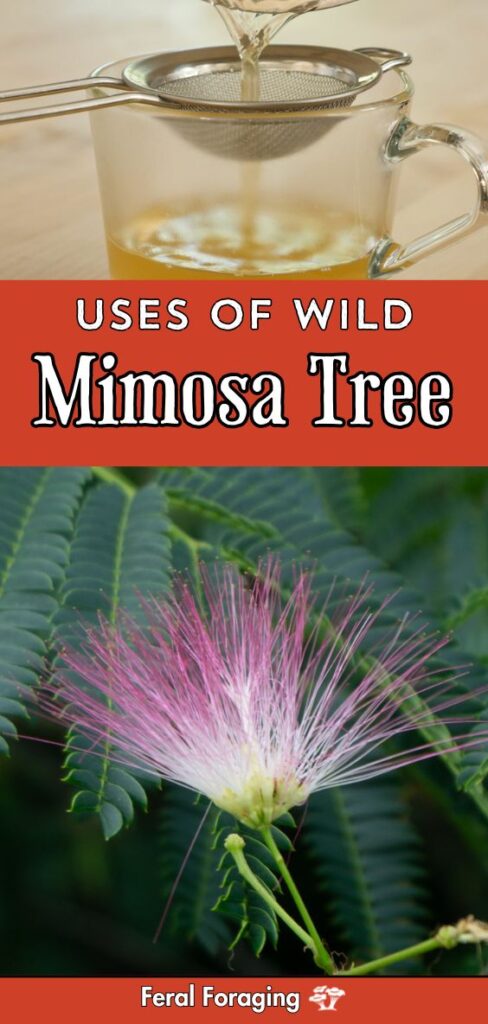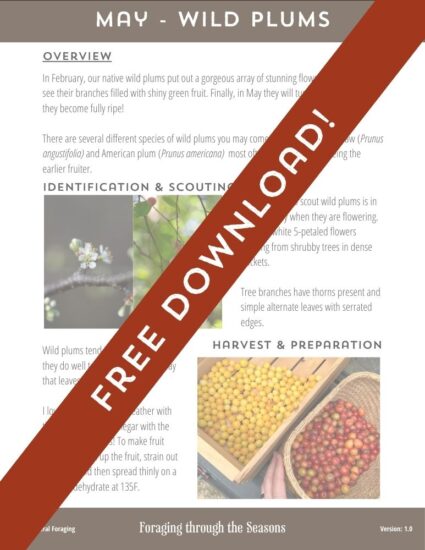Albizia, often called Mimosa Tree, Persian Silk Tree, or the “Tree of Happiness,” is a popular wild tree that is used to alleviate anxiety, depression, and insomnia.
In this article, you’ll learn to positively identify it, how to make an herbal preparation, what parts were used, important side-effects to consider, and its status as an invasive tree!
The specific species of Albizia that this article focuses on is Albizia julibrissin.
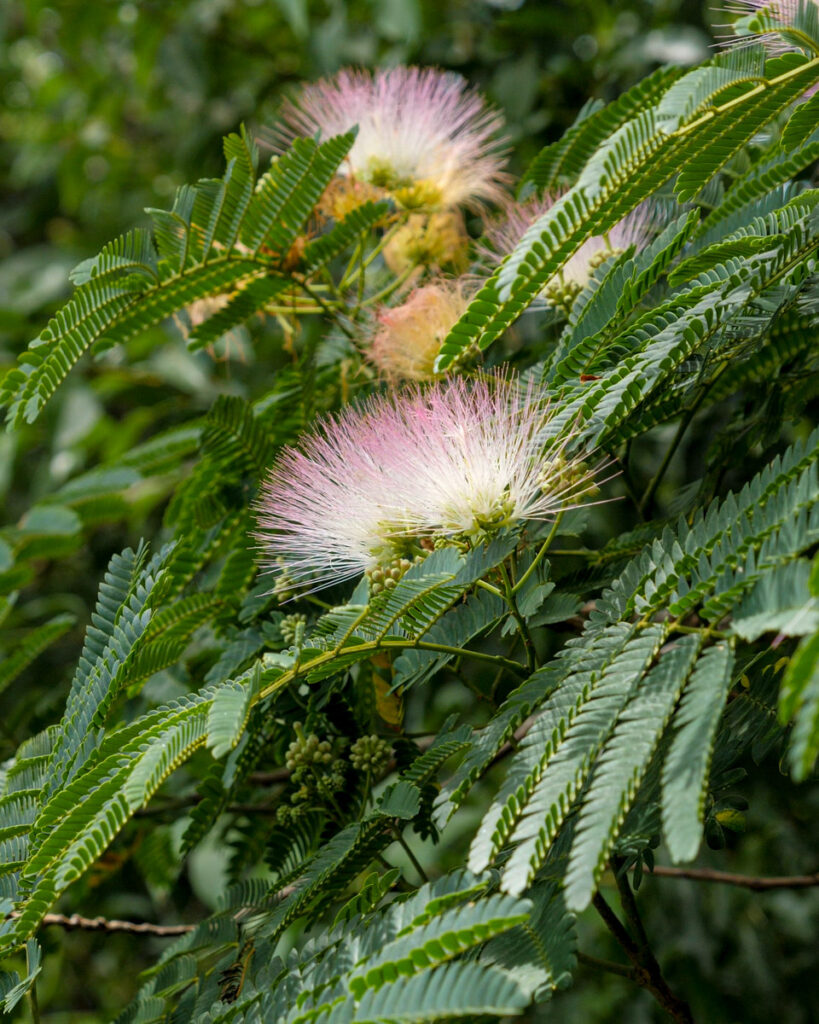
Etymology and naming
As we learned, this tree goes by many names, which stems in part from its occurrence over a wide geographical range.
The reason it is often called “Mimosa tree” is due to the similarity of the flowers to the true Mimosa. We might regard Albizia as “False Mimosa” in that regard. (See the Lookalikes section)
The true Mimosa and Albizia are closely related. They are in the same clade within the Fabaceae family.
The name for the genus Albizia pays homage to an Italian nobleman, Filippo delgi Albizzi, an 18th-century naturalist. The Albizzi family were rivals with other well-known Italian families like the Medici.
How to gather

The flowers can be easily picked from the trees and placed into a gathering basket, but don’t sleep on the bark!

The bark of Albizia is extremely easy to strip and peel from the tree. If you are gathering outside the native range of this tree, this offers the added advantage of helping to knock back the tree from growing more. This can have positive effects on your local ecology because Albizia is an invasive tree (in North America). See the Invasiveness section for more!
I always recommend gathering the bark to people who are interested in using this tree for this reason!
Where to find
As an invasive pioneer species, Albizia trees are often found on the edges of fields and forests. In North America they can be found by the thousands along roadsides.
The best time to find Albizia is during the window when it is flowering usually in early to mid-Summer. My foraging calendar can be used to get more detailed timing.
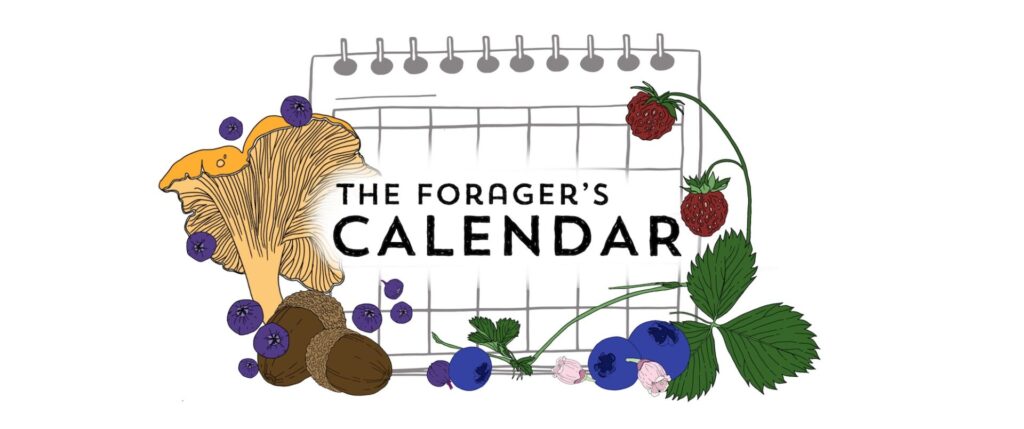
Identification
Albizia can be easily recognized by their bipinnate compound leaves, pink plume-like flowers, and gray smooth bark.
- Leaves: Bipinnately compound leaves, with numerous small leaflets arranged along each leaf axis. Each leaflet is oblong and pointed at the tip, giving a fern-like appearance.
- Flowers: Showy, pinkish to reddish plume-like clusters of flowers. Each flower cluster is fragrant and contains numerous stamens.
- Bark: Smooth and grayish-brown, often becoming slightly furrowed with age. Numerous lenticels are present. Bark strips easily
- Fruit: Flat, brown pods that mature in late summer to early fall, containing several small seeds.
- Height: Can grow up to 30 to 40 feet tall, with a wide-spreading, umbrella-like canopy.
- Habitat: Often planted as an ornamental tree in gardens, parks, and along roadsides. It prefers sunny locations with well-drained soil. Invasive growth habit, often found in the wild along forest edges.
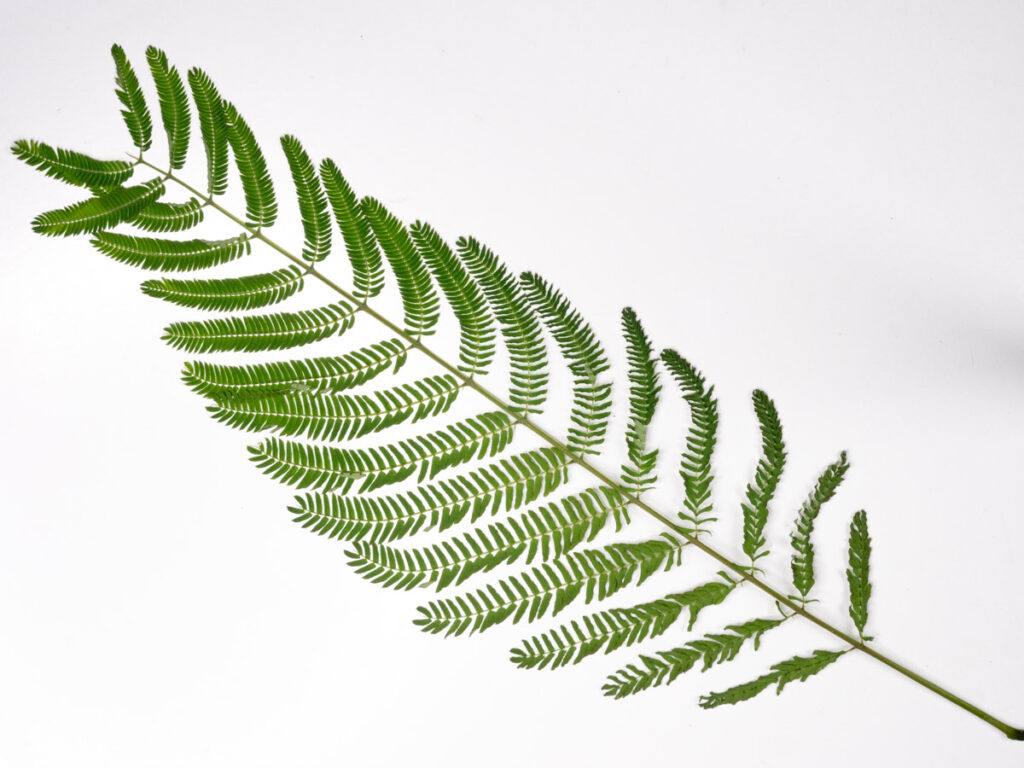
Lookalikes
Albizia would not easily be mistaken for another plant, but there are a few that you should learn to get a better understanding of the distinguishing characteristics!
True Mimosa vs Albizia
True Mimosa and Albizia have very similar flowers, hence “Mimosa Tree” as a common name for Albizia, but they are incredibly easy to distinguish.
- Growth Habit: True Mimosa grows as a small crawling shrub, vs Albizia, which grows to be a full tree
- Flowers: Mimosa flowers have plume petals that go in every direction vs Albizia flowers, which tend to occupy only a triangular area
- Leaves: Mimosa leaves, especially from Mimosa pudica, are easily distinguished from Albizia because they will fold rapidly when touched, but Albizia will not
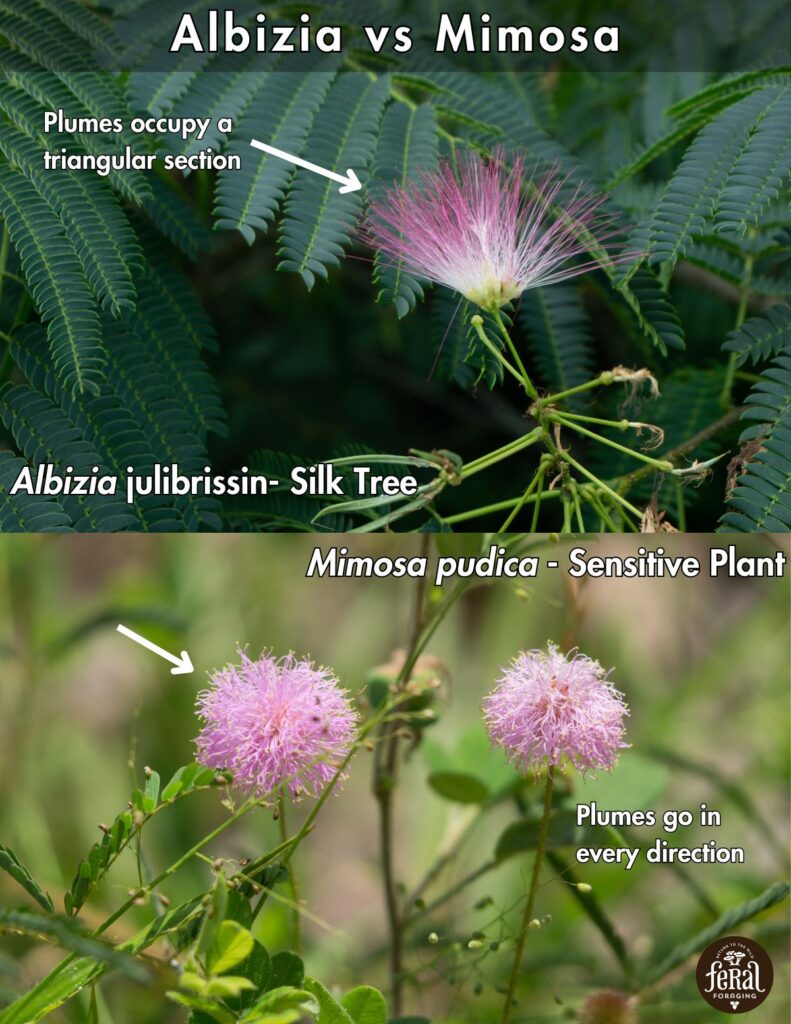
Acacia vs Albizia
In theory, one could mistake these two trees as they both have plume-like flowers and bipinnate compound leaves, but they are very easy to tell apart!
- Flowers: Acacia has bright yellow flowers vs the pink blooms of Albizia
- Leaves: The leaflets of Acacia are much smaller than Albizia
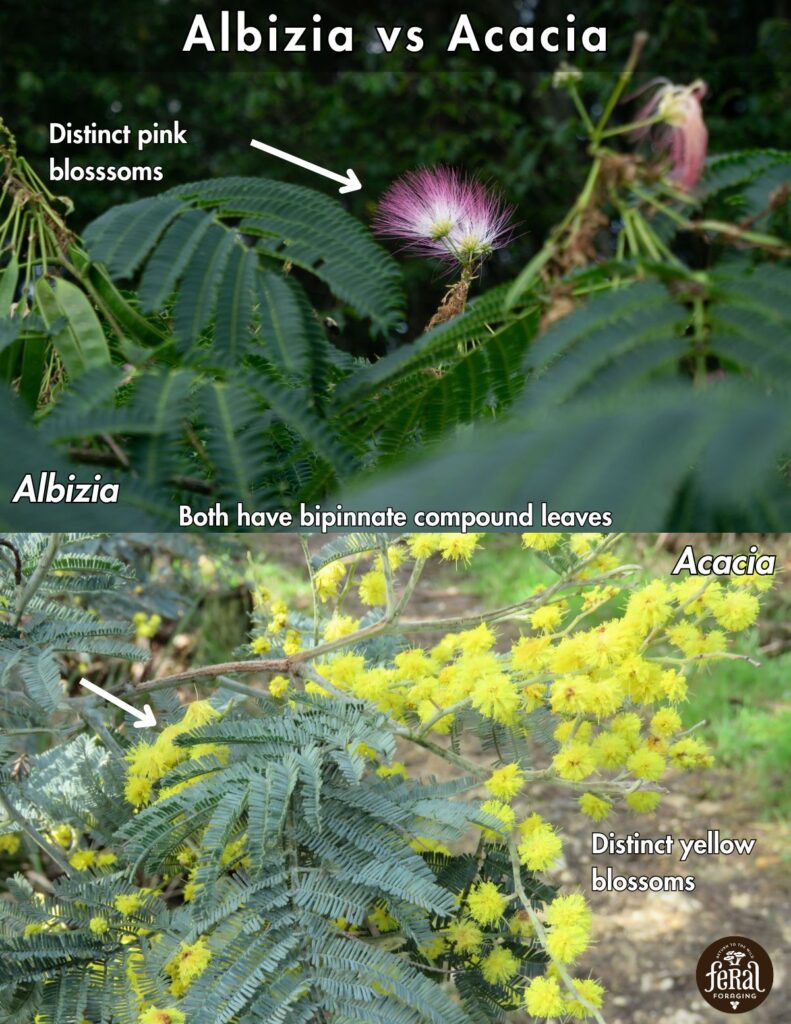
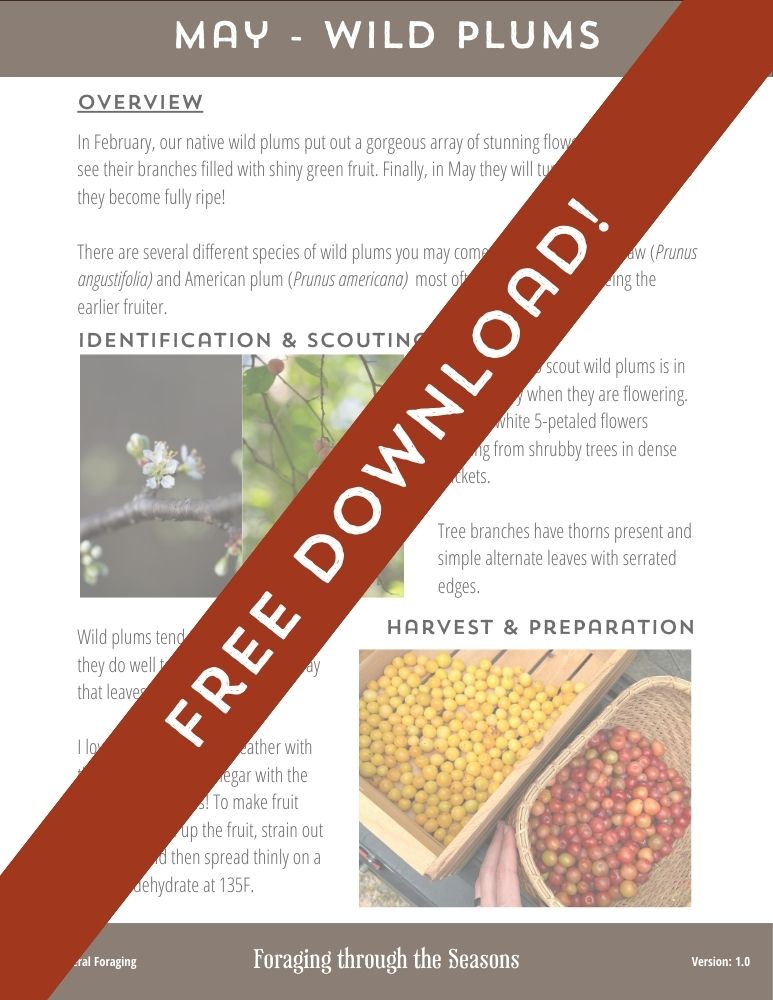
Get my foraging guide!
Learn an amazing wild food for each month of the year with my guide, Foraging through the Seasons!
Enter your email below to have this FREE guide sent straight to your inbox!
Edibility
I read several reports that the young leaves and shoots can be eaten as a vegetable and wanted to test this.
The texture of the very young plant parts was decent, but I did not enjoy the flavor very much. It had a sharp quality that I did not prefer.
In addition, unfortunately, even with just eating the young plant parts I experienced irritation that I describe further in the Precautions section.
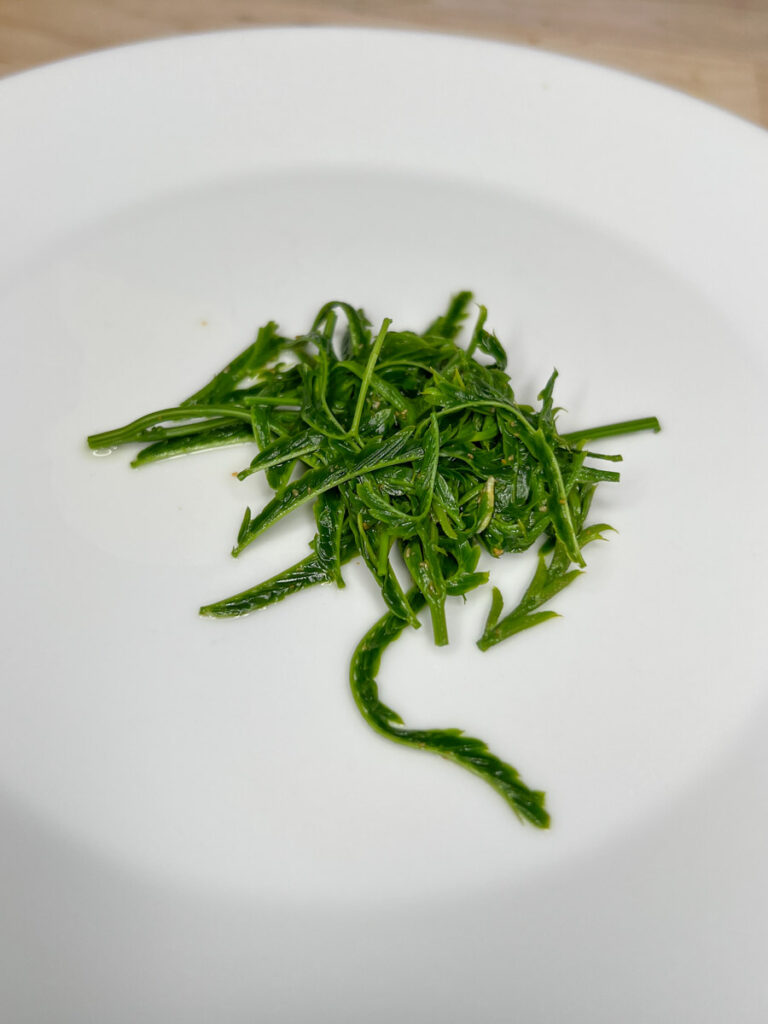
Medicinal Uses
Albizia has been used in Traditional Chinese Medicine to alleviate anxiety and depression. Another use related to those two is to help with sleeplessness.
Modern studies have investigated some of the chemical constituents that may be involved in Albizia’s herbal actions. They include:
- triterpenoids
- lignans
- flavonoids
- saponins
- sterols
Source: Molecular Basis Mechanism
A particular saponin, Julibrocide C1, has been studied and shown to have anxiolytic effects in mice.
Source: Anxiolytic Effects Julibroside
The parts of Albizia used for medicinal purposes are the inner bark and blossoms. I’ve tried various traditional preparations myself, but I don’t use the herb a lot due to the reasons elaborated in the Precautions section.
Medicinal Uses Overview:
- Parts used: Inner bark and flowers
- Preparation: Traditionally, a decoction or infusion, but modern uses include tinctures
- Action: Used to alleviate anxiety or depression, and insomnia
- Precautions: Some people experience acute irritation in the mouth and throat from consuming Albizia

Albizia bark decoction
To make a decoction with Albizia, first break up the bark you’ve gathered into smaller pieces.
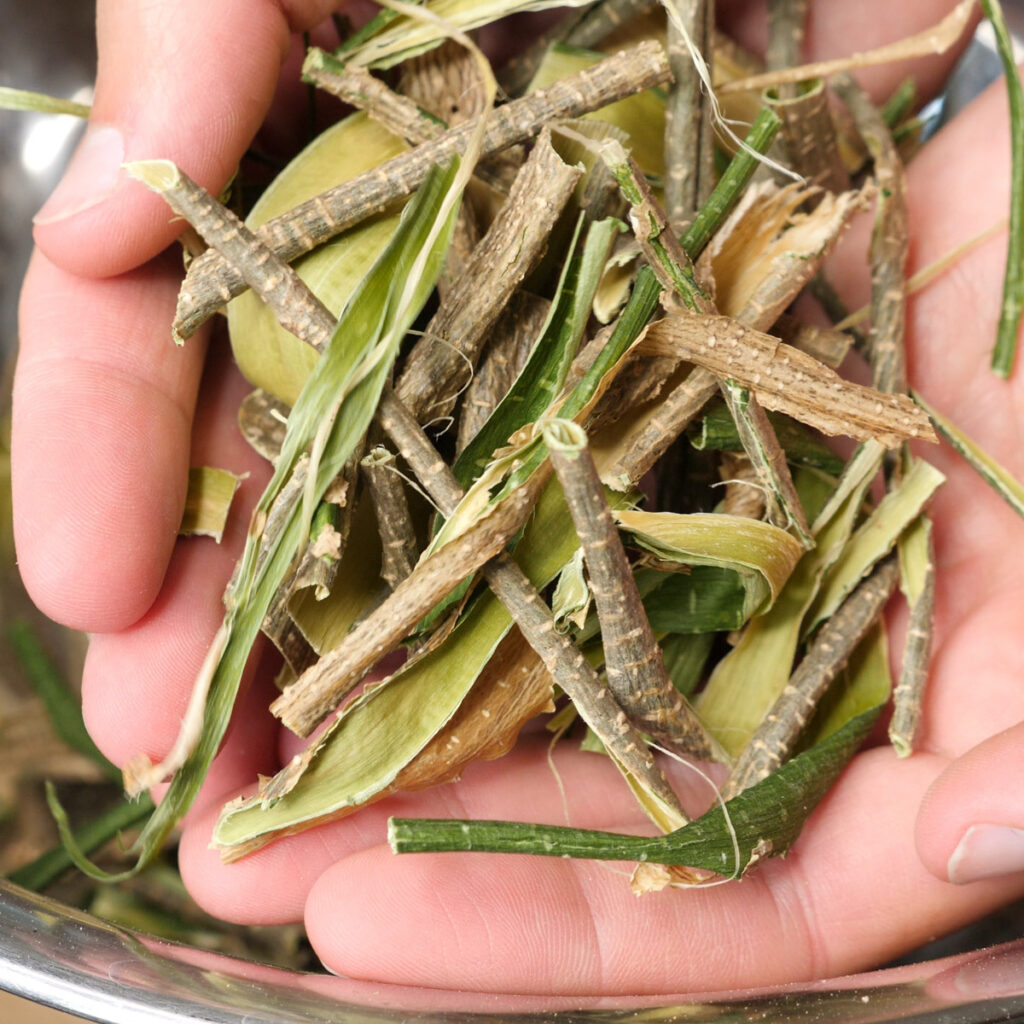
Next, bring a pot of water to a boil and drop your pieces of bark in.
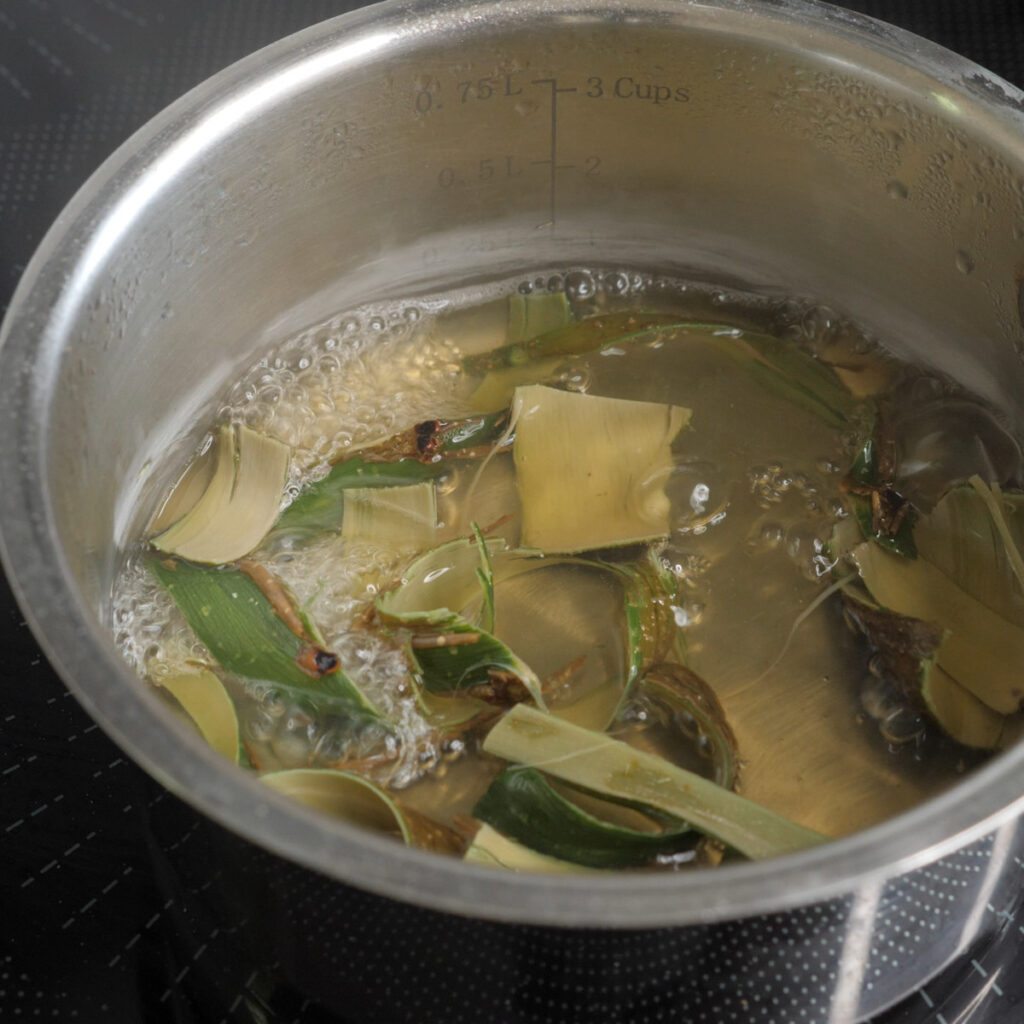
Let it simmer for about 10-20 minutes, then strain everything out. After that you can let it cool slightly and you have a ready-to-use Albizia herbal decoction!
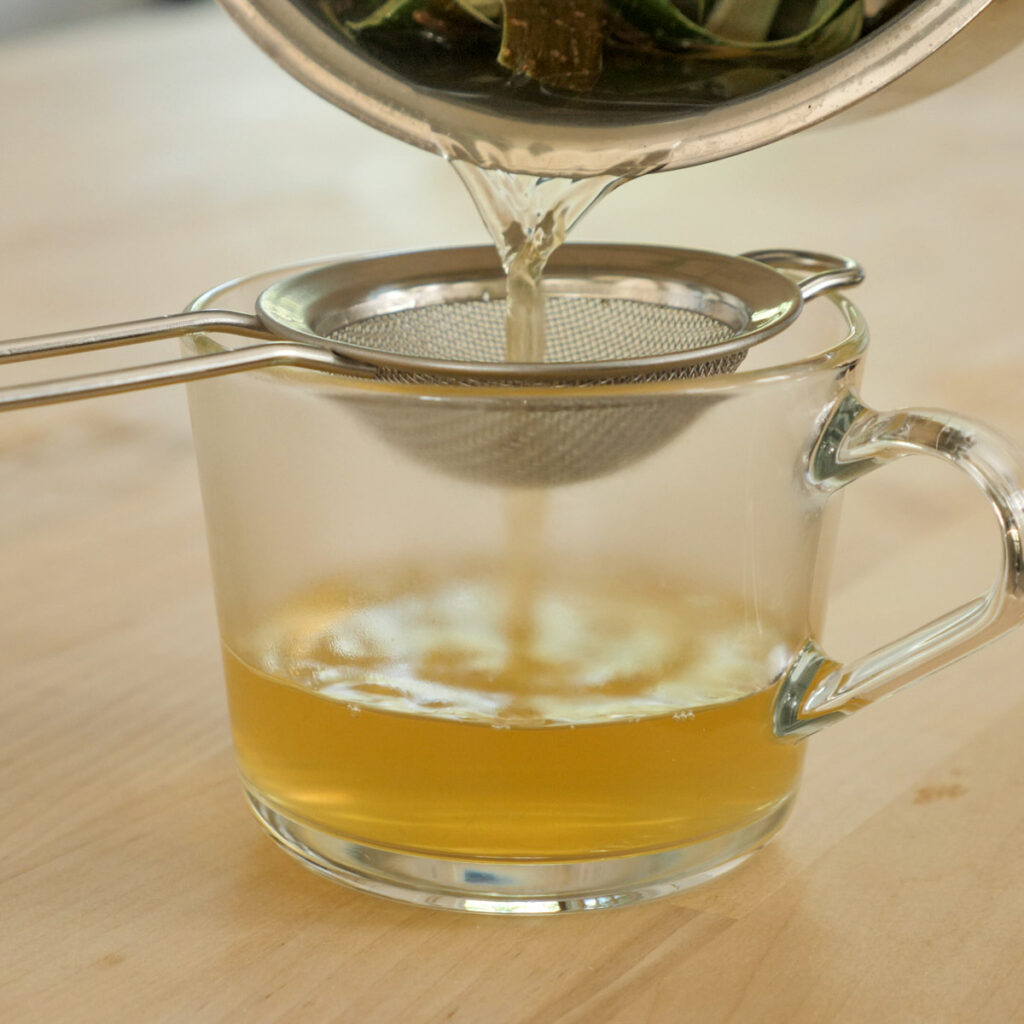
Precautions
Albizia does have potential side effects, including producing a burning sensation in the mouth and throat. It is not easy to find this information, I had to discover this firsthand.
This effect is not experienced by everyone, but it highlights the importance of trying small amounts of a new herb before taking larger doses!
I have tested this with different parts of the tree using different kinds of solvents, including water (decoction), alcohol, and even honey! In addition, I’ve tested this with different trees from completely different areas.
No matter what I use, I always get an intense, acrid reaction in my mouth and throat. I’ve even experienced irritation just from breaking up the bark to make a tincture at home!
I have found that tincture preparations tend to produce less of this sensation, but it is still detectable.

Toxicity
In addition to the irritation phenomenon described in the above Precautions section, the seeds and seed pods of Albizia reportedly contain a neurotoxin so you should likely not eat those!
Sometimes, plants or fruits like Paw Paw (Asimina triloba) contain small amounts of chemicals that can be neurotoxic, but have a long history of being consumed without issue. That being said, I haven’t found any strong evidence to suggest that Albizia seed pods were ever eaten much as a food.
Invasiveness
Albizia is an invasive plant in North America that outcompetes many other important North American native shrubs like wild plum, sumac, serviceberry, and more!
I recommend removing this tree wherever you find it in North America. Hack-and-spray methods likely work well to accomplish this effectively.
Removing Albizia benefits local ecology, including native plants, insects, and animals and you as well through its herbal uses! This is one of the many win-wins we experience from foraging for useful invasive species like Albizia.

Closing thoughts
Albizia can certainly be helpful, though it is important to know that some people can experience side-effects from consuming it.
This wild medicinal tree is easy to find and gather. If you are in North America gathering the inner bark by stripping the tree is actually encouraged as this invasive tree outcompetes important native shrubs and plants.
